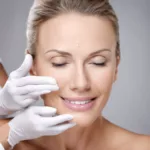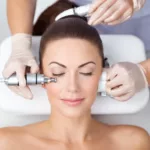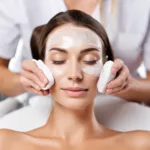8 December 2023
Discover the benefits, types, and considerations of microdermabrasion, a popular dermatology procedure that can transform your complexion.
In the quest for flawless skin, many individuals turn to various skincare procedures. One such procedure gaining popularity is microdermabrasion. This dermatology technique involves the gentle removal of the top layer of skin, resulting in a multitude of benefits, including improved complexion, reduced signs of aging, and the fading of acne scars. In this article, we will explore the different types of microdermabrasion, its benefits and risks, and what to expect before, during, and after a session. Whether you’re looking to even out your skin tone or achieve a brighter complexion, microdermabrasion may be the solution you’ve been searching for.
Benefits of Microdermabrasion
Microdermabrasion offers a range of benefits that can transform the appearance and texture of your skin. By stimulating the production of new cells and boosting collagen, this procedure encourages the skin to repair itself. Some of the key benefits of microdermabrasion include:
1. Improving overall complexion: Microdermabrasion can help even out skin tone and leave your complexion looking radiant and refreshed.
2. Reducing signs of aging: By promoting collagen production, microdermabrasion can reduce the appearance of fine lines and wrinkles, as well as improve skin texture and firmness.
3. Treating acne scars: Microdermabrasion can fade the appearance of acne scars, helping to restore a smoother complexion.
4. Reducing the appearance of large pores: Through exfoliation, microdermabrasion can minimize the appearance of large pores, giving your skin a more refined look.
5. Clearing clogged pores: This procedure effectively removes dead skin cells and unclogs pores, preventing breakouts and promoting clearer skin.
6. Evening out discolored or hyper-pigmented skin: Microdermabrasion can help fade discoloration and hyperpigmentation, resulting in a more even skin tone.
Types of Microdermabrasion
There are two main types of microdermabrasion procedures: crystal microdermabrasion and diamond microdermabrasion. Both types effectively exfoliate the skin and offer numerous skin benefits.
1. Crystal microdermabrasion: This method involves the use of microfine crystals that are shot onto the skin and simultaneously vacuumed back up, providing a high-powered exfoliation.
2. Diamond microdermabrasion: Crystal-free, this technique utilizes a diamond-tipped wand to exfoliate the skin, offering a gentler alternative to crystal microdermabrasion.
Who Is Microdermabrasion Good For?
Microdermabrasion is suitable for most individuals in good health, but it is particularly beneficial for those with specific skin problems or skincare goals. If you have sun-damaged skin, acne scars, large or clogged pores, lines and wrinkles, or an uneven complexion, microdermabrasion may be an ideal treatment for you.
Who Should Not Get Microdermabrasion?
While microdermabrasion is generally safe, certain conditions may make it unsuitable for some individuals. If you have an active cold sore outbreak, moderate to severe acne, an open wound or skin irritation, a rash, rosacea, a suspicious mole, or a sunburn, it is best to postpone microdermabrasion. Additionally, if you have used the acne medication isotretinoin in the past six months, microdermabrasion should be avoided.
How Long Does Microdermabrasion Take?
The microdermabrasion procedure typically takes between 15 to 30 minutes. Upon arrival, you will be taken to a treatment room and asked to change into a gown. After cleansing your face to prepare the skin, the technician will perform the microdermabrasion using the chosen method. Following crystal microdermabrasion, the technician will cleanse your skin to remove any stray crystals and apply moisturizer and sunscreen.
How Many Sessions Are Needed?
The number of microdermabrasion sessions required depends on your specific skin goals. While a single session can leave your skin looking bright and feeling soft, a series of treatments is often necessary to achieve desired results. The frequency and number of sessions will vary based on your skin’s needs and goals, but typically, six to ten treatments spaced one to two weeks apart are recommended.
Could I See Results After Just One Microdermabrasion Session?
While you may notice immediate improvements in your skin’s appearance after a single microdermabrasion session, it often takes multiple sessions to achieve the desired results. The benefits of microdermabrasion accumulate over time, making regular treatments more effective in the long run.
Cost of Microdermabrasion
The cost of microdermabrasion can vary depending on your location and the establishment you choose. Prices typically range from $75 to upwards of $300 per session. Factors such as the inclusion of additional treatments or the reputation of the spa or salon can influence the cost. While at-home microdermabrasion kits are available, professional treatments offer deeper exfoliation and superior results.
Preparing for Microdermabrasion
To prepare your skin for microdermabrasion, there are a few steps you should take two to three days before your treatment:
1. Avoid aspirin and aspirin-based medications.
2. Refrain from waxing the treatment area.
3. Minimize sun exposure to prevent sunburn.
4. Cease the use of exfoliating products, Retin-A, and glycolic acid.
5. Avoid using topical treatments on the day of your appointment, unless advised otherwise by your provider. Arrive with a clean face and no makeup if possible.
Side Effects and Risks
When performed by a skincare professional, microdermabrasion is generally considered safe. However, if not done properly, it can lead to scarring. Temporary side effects may include bruising, dry or flaking skin, increased sun sensitivity, mild abrasions, and the recurrence of cold sores.
Does Microdermabrasion Hurt?
Microdermabrasion is a relatively painless procedure as it only targets the surface layers of the skin. Some individuals may experience a rough sensation similar to a cat’s tongue or a gritty facial massage. Minor tugging may occur, but it should not be painful. If you feel discomfort during the treatment, it is essential to communicate with your technician.
What to Expect After Treatment
After microdermabrasion, you may experience tenderness, swelling, or minor bruising. It is normal for your skin to appear slightly pink immediately after the session, but this typically subsides within a few hours. For the following day or two, your skin may feel similar to a mild sunburn. It is advisable to avoid acne treatments, toners, and medicated cleansers immediately after the procedure, as they may cause discomfort. However, non-medicated cleansers, moisturizers, and makeup can usually be used without issue. Sunscreen is essential to protect your skin, as it becomes more susceptible to sun damage post-treatment. The benefits of microdermabrasion usually last up to a month, but regular follow-up treatments every four to six weeks are recommended for optimal maintenance.
Conclusion:
Microdermabrasion offers a safe and effective way to rejuvenate and improve the appearance of your skin. With its ability to even out complexion, reduce signs of aging, treat acne scars, and minimize pores, this procedure has become increasingly popular. By understanding the different types of microdermabrasion, who it benefits, and what to expect, you can make an informed decision about whether it’s the right skincare treatment for you. Remember, consult with a skincare professional to determine the best approach for your specific needs and goals.



